
[ad_1]
Looking for a powerful computer you can take with you anywhere? Good news, portability fans: loads of those exist. From hybrid workhorses to gaming machines with serious grunt, the best premium laptops in 2022 make it easy to get stuff done on the run.
And while their flip-top form remains fundamentally true to that of their forebears, the nicest notebooks today are lighter, brighter and faster than ever. So whether you’re typing on the train, coding in a café or procrastinating at your place of work, the right laptop will make life a whole lot easier.
Not sure how to choose? Helpful as ever, we’ve flipped, clicked and carried all of the latest laptops – and listed our top picks in list guide below. Our guide spans slimline ultrabooks, big-screen behemoths and everything in between. And because not everyone needs the full desktop experience, we’ve also included a few of our favourite Chromebooks.

MacBook Air (M2)
Apple’s M1-powered MacBook Air (below) proved that raw power and streamlined packaging is a killer combo. Its successor takes that approach a step further: with a revamped chassis and M2 silicon inside, it sets a new benchmark for all premium laptops.
Adopting the same footprint as before, the M2 Air ditches Apple’s classic wedge in favour of a flat chassis that’s fantastic to type on. Refined bezels give the unit a neat, uncluttered look, while a notch increases screen real estate by flanking the webcam with the toolbar. Brightness is boosted and audio is leagues ahead of the M1 Air, although camera quality remains dismal.
Performance is superlative for mainstream tasks, leaving its predecessor for dust. The lack of fan can throttle sustained workloads, but few users will need more raw power. Battery life is similarly impressive, to the point that we routinely forgot to plug it in. When we did, the return of MagSafe was a welcome one.
There’s no avoiding Apple’s price hike, which takes the M2 Air firmly out of entry-level territory. But unless you’ve got very specific performance needs – such as support for multiple external displays – this is the best Mac (and laptop) for most people.
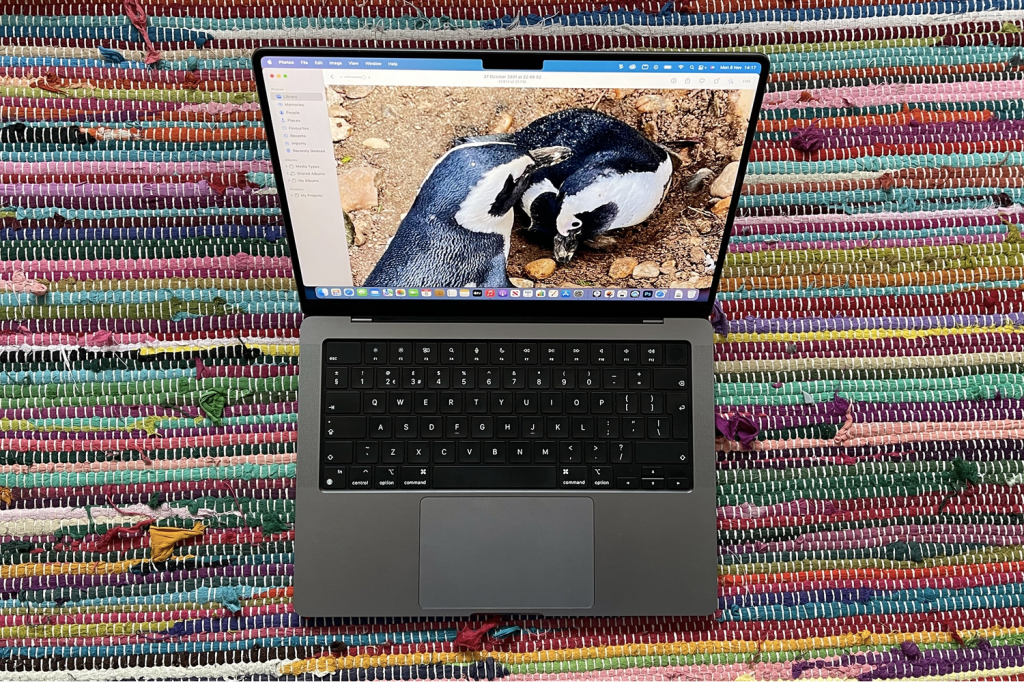
Apple MacBook Pro 14in (M1 Pro)
Putting the ‘pro’ back in MacBook Pro, Apple’s M1 Pro processor is a serious piece of silicon. For basic tasks, it’s more than most people will ever need. But provided you work in a field that can take advantage of the Pro’s power – and you’re flush enough to foot the bill – it’s proof that Apple knows how to make a hot chip.
Borne out by benchmarks and real-world use, the MacBook Pro 14in is leagues ahead when it comes to tasks that benefit from boosted multi-core performance and GPU grunt – think video production and 3D rendering. It’s also blessed with reliable all-day battery life and a proper wish-list of ports.
Chunkier and heavier than its 13in predecessor – with an extra 200g on the scales – it’s a solid package that clearly means business. The trackpad is massive but reliable, while the keyboard is a joy to type on. With the menu bar spanning the screen notch up top, you’re left with a full 16:10 display area below. And what an area that is: with rich blacks, vivid colour and up to 1600 nits of brightness for HDR content, the mini-LED panel is gorgeous. The six-speaker system has oomph to match, too.
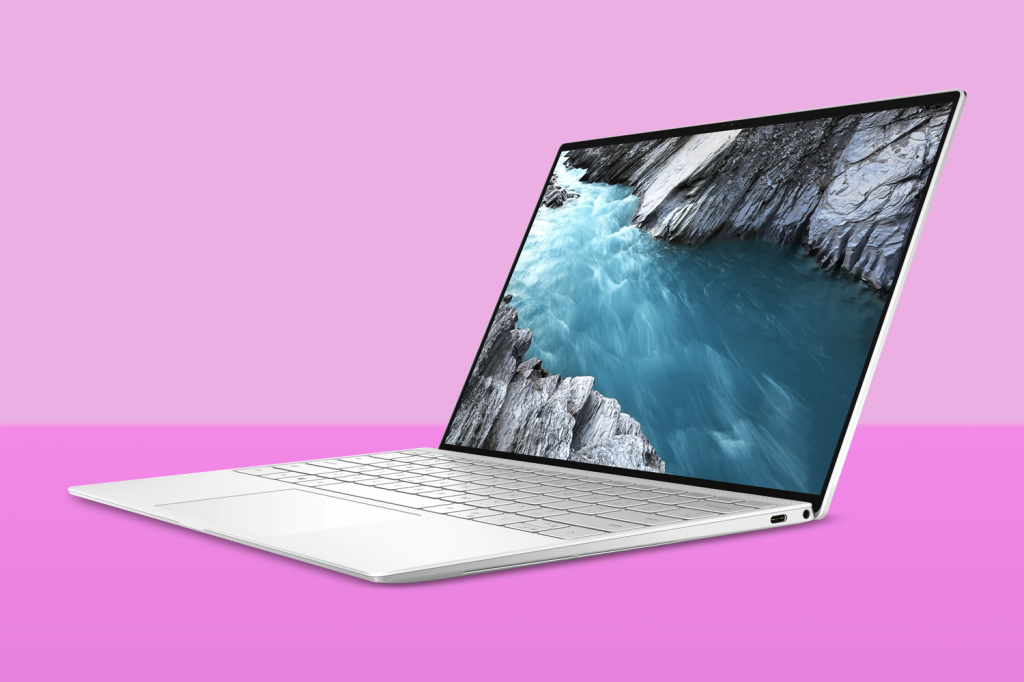
Dell XPS 13 (9310)
Dell’s XPS machines have long dominated the ultra-portable laptop market. But the latest edition steps things up another notch: besides a travel-friendly form factor and solid performance potential, the 9310 can also be configured with a stunning OLED display.
Streamlined by design, the XPS 13 is slim at 1.48mm, relatively light at 1.27kg and blessed with slender bezels. The whole package feels well-built and reassuringly solid – and the premium impression continues with the satisfyingly responsive keyboard and trackpad. The only compromises? The 720p webcam could be sharper, while two Thunderbolt 4 ports feels a little miserly.
Opting for that OLED panel does reduce battery life, and you’ll get higher brightness from the LCD screens. But the OLED simply can’t be topped for colour coverage and depth: it’s a gorgeous thing to work with and watch on.
Performance depends on how you spec it, but 11th gen Intel silicon means the XPS 13 is no slouch in any setup. There’s more than enough power on tap to deal speedily with daily demands and creative workflows. Only if you task it with taxing games or 3D rendering is there any risk that the lack of discrete graphics hardware will hold you back.
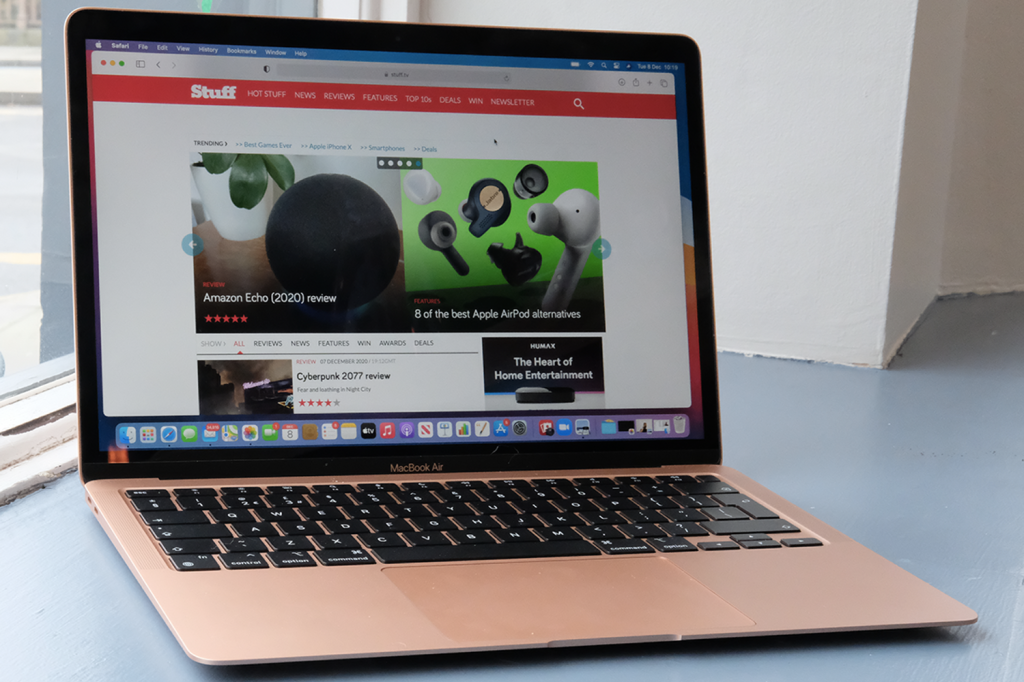
Apple MacBook Air (M1)
Want a powerful, lightweight laptop with all-day battery life, brilliant build quality and a superb display? While it’s not the latest laptop to come out of Cupertino, Apple’s MacBook Air from 2020 remains a slender contender for the premium crown.
Since usurped by the M2 edition which now tops this list, the first Air to use Apple’s own silicon remains a masterpiece. Featuring the breakthrough M1 chip, it’s the computing equivalent of a speedboat. Fanless and fast, this MacBook Air is magnificent for multi-tasking. There is still a ceiling on its capabilities, but one that only power video editors are really at any risk of hitting.
Yes, the webcam could be sharper, the bezels slimmer and the port array more generous. But the rest of the MacBook Air M1’s feature set is otherwise just as impressive as its core performance. Battery life is heroic, the Magic Keyboard supremely responsive and the 13.3in Retina display deliciously sharp and vibrant. Plus the whole lot is bundled up in a featherweight aluminium wedge that’s as slimline as ever.

Microsoft Surface Laptop Studio
Disguised as a standard laptop, Microsoft’s Surface Laptop Studio is a refined hybrid for designers. A hinge behind the screen allows it to pivot forward into two positions: an angled stance that covers the keyboard or a flat, table-style setup. Unlike its Surface Studio sibling, though, it can’t be set to a low tilt for doodling.
A masterpiece in magnesium, Microsoft’s nailed the industrial design of the Surface Laptop Studio. It’s not the lightest at 1.8kg, nor is it the narrowest 14.4in notebook you can buy – but the build quality is easily on a par with Apple’s best efforts.
A 3:2 aspect ratio makes the display perfect for productivity and full-screen creativity. It can’t rival Apple’s mini-LED MacBooks, but it’s bright for an LCD and offers excellent colour depth. It also supports Microsoft’s Surface Slim Pen 2 stylus.
Performance could be better for the price. The base model is perfectly fine for digital design work, but video editors or 3D modellers would need to measure their expectations of Intel’s Xe graphics. So it’s not a powerhouse, but it is a beautiful thing to behold and use. And the 18-hour battery life means you can do that for a full day.

Apple MacBook Pro 16in (M1 Max)
In modern MacBook land, there are several tiers of Pro. The 16in model with M1 Max silicon? Very much at the top. It’s a world-beating workhorse with serious performance chops. And it will absolutely hoof your wallet.
Aping MacBook Pros of the past, there’s a boxiness to the shell that sets it apart from its predecessor. While the extra half-kilo yields longer battery life, the heft won’t suit everyone. But it’s not meant to.
Neither is the performance: for most people, the M1 Max is overkill. It takes specific workloads to utilise the immense multi-core power. Task it with video encoding, for example, and it can better a Mac Pro by processing seven streams of 8K ProRes footage simultaneously.
If portability is your priority, pick the MacBook Pro 14in (above). And if you want a powerful middle ground, spec the MacBook Pro 16in with an M1 Pro chip. But only desktop-grade grunt will do, this is the Pro to pick.
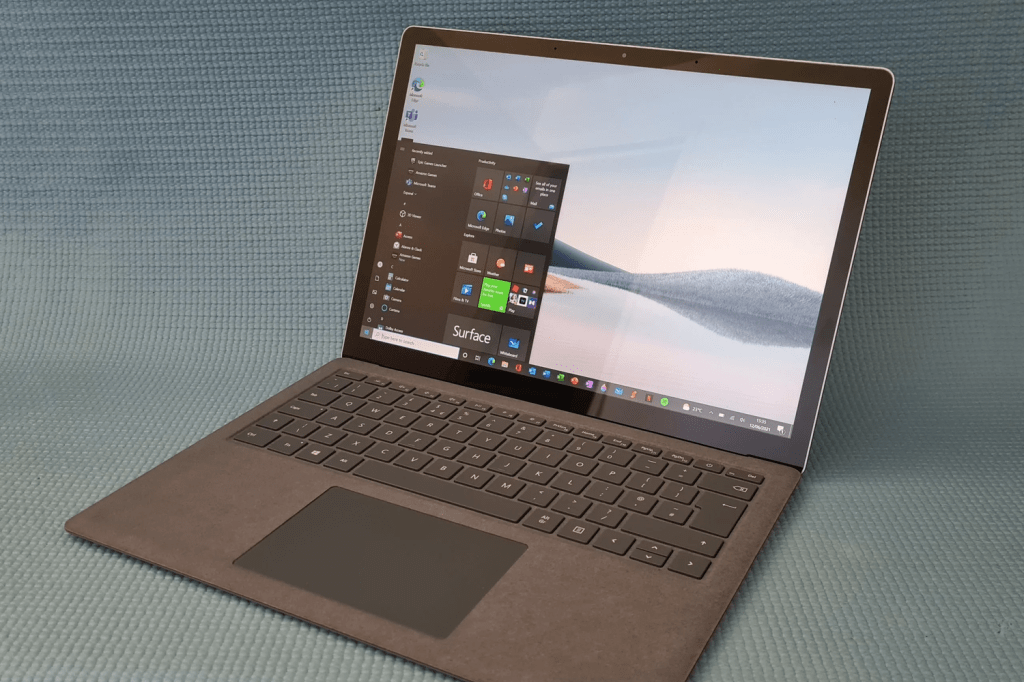
Microsoft Surface Laptop 4
An update rather than an all-new model, the refreshed Surface Laptop is one of the best premium Windows laptops you can buy. Geared towards productivity, the 3:2 aspect ratio of its sharp 13.5in display is ideal for documents, while the keyboard and trackpad are satisfyingly responsive. Pick the option topped with Alcantara and your palms will thank you
Boosts to performance and battery life mean the Surface Laptop 4 can comfortably tackle heavier workloads, or last an entire work day away from the mains – with some juice left for a Netflix binge once you clock off. Something the punchy Atmos-optimised speakers can assist with.
Slimmer bezels would be nice, as would a slimmer price tag for the top-spec options. A paucity of ports also limits connectivity. But go for the mainstream variant and you’re still getting a lightweight, understated Windows notebook with MacBook build quality, day-long battery and versatile potential.
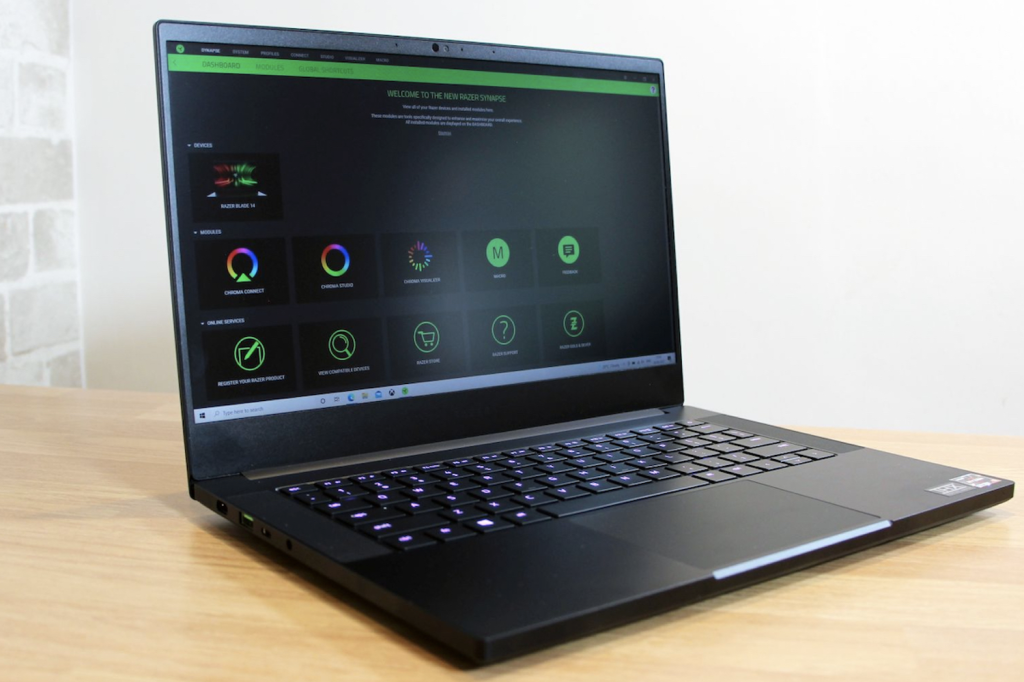
Razer Blade 14 review
Razer’s first 14in laptop is also its first to ship with an AMD processor. And with Nvidia GeForce RTX 3060 graphics providing added gaming grunt, it strikes a superb balance between power and portability.
Like the rest of Razer’s notebooks, the Blade 14 comes clad in CNC-milled aluminium. And at 16.8mm slim and 1.78kg light, it cuts an understated picture next to your average beefcake gaming laptop. The 14in display ships with a Full HD resolution and 144Hz refresh rates as standard. You can opt for higher specs, but the default setup still delivers lashings of depth.
Yes, you’ll get more grunt from larger laptops with beefier cores. The underside can also run hot under load, while 90-minute gaming battery life is average, rather than impressive. But with powerful hardware crammed into a shell this streamlined, compromises are inevitable – and the sacrifices made by the Blade 14 are remarkably few.
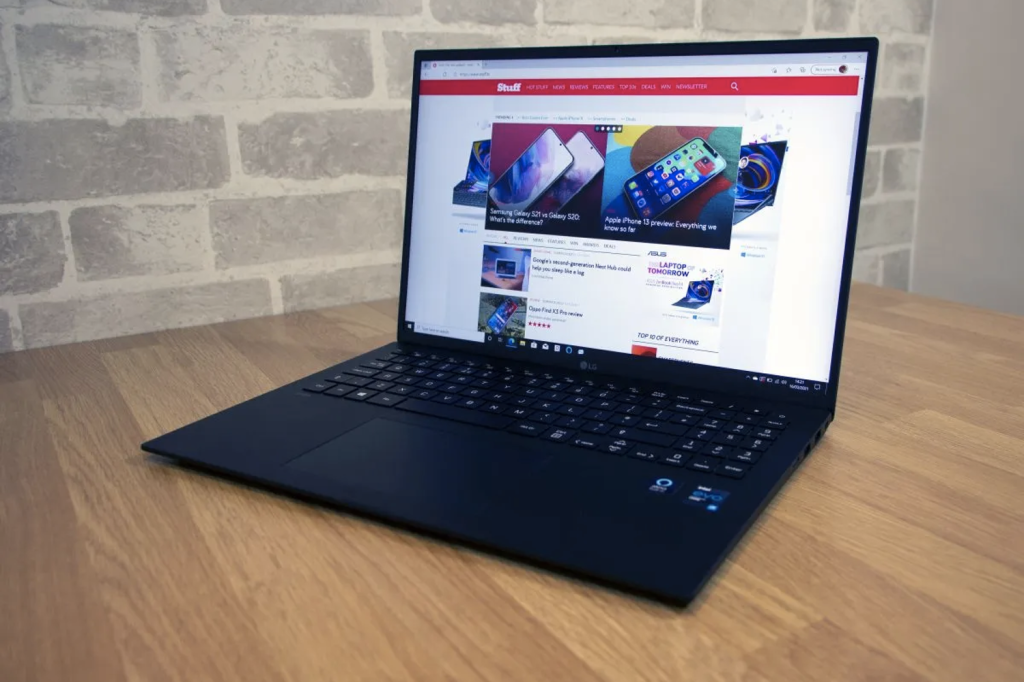
LG Gram 16
LG’s Gram laptops are all about streamlined designs, big screens and stellar battery life. The Gram 16 delivers in all departments: longevity is superb, the display immersive and the shell lightweight. In fact, at just 1.19kg, it’s the lightest 16in laptop in the world (at the time of writing).
Bolstering those already impressive credentials is a solid set of features. The keyboard is snappy to tap, the speakers reasonable enough and the 16:10 aspect ratio ideal for streaming. Connectivity is similarly comprehensive and, despite the featherweight frame, the battery can surpass a massive 21 hours.
It’s not the top laptop when it comes to outright performance, though. Sure, it’s no slouch, but gaming and intensive image editing will be better handled by beefier, faster rivals. Then again, for a full day of mainstream tasks, the Gram 16 will still deliver without complaint. And it won’t be beaten on battery life.
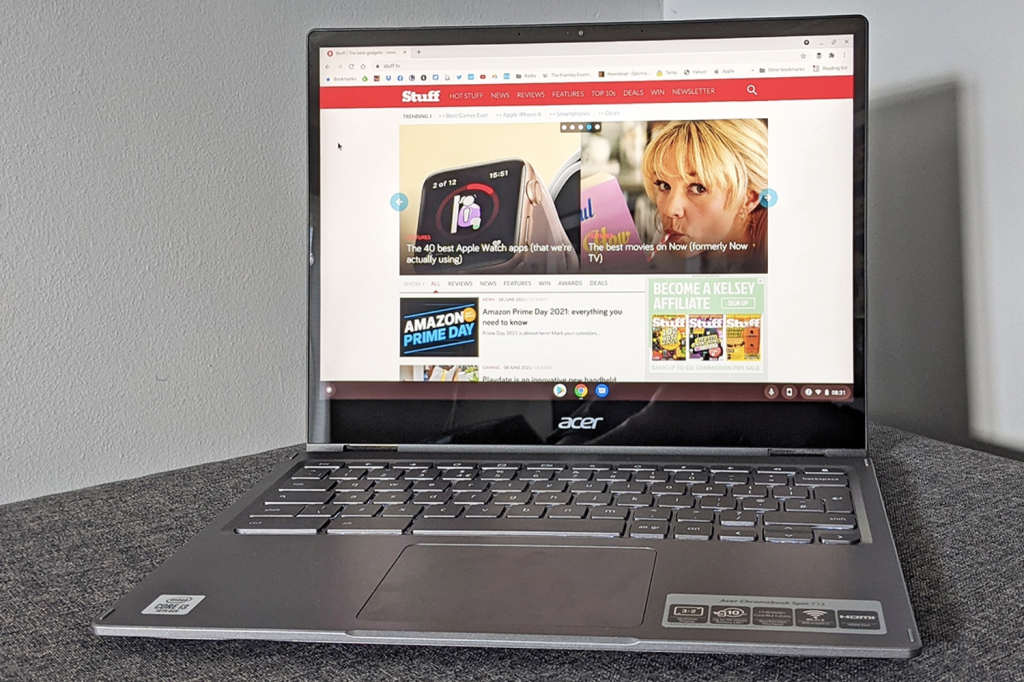
Acer Spin 713
Don’t need full-fat desktop functionality? If your laptop life is lived largely in an internet browser, a Chromebook could be just the ticket. And if you want a lightweight, reliable device for cloud computing, Acer’s Spin 713 gets a whole lot right.
There are cheaper Chromebooks out there, but few mid-range models can do quite as much as the Spin 713. Its bright, sharp 14in touchscreen can flip to form a tent or tablet. Its HDMI output means you can easily hook up for big-screen streaming. And its brushed aluminium finish gives it a premium feel – an impression mirrored by the keyboard and trackpad.
Chrome OS continues to improve, with a growing app catalogue and tighter integration with Android smartphones. It’s ideal if you’re heavily invested in Google’s web services – and the whole things runs slick and zippy on the Spin 713. Plus you get 10 hours of battery life.
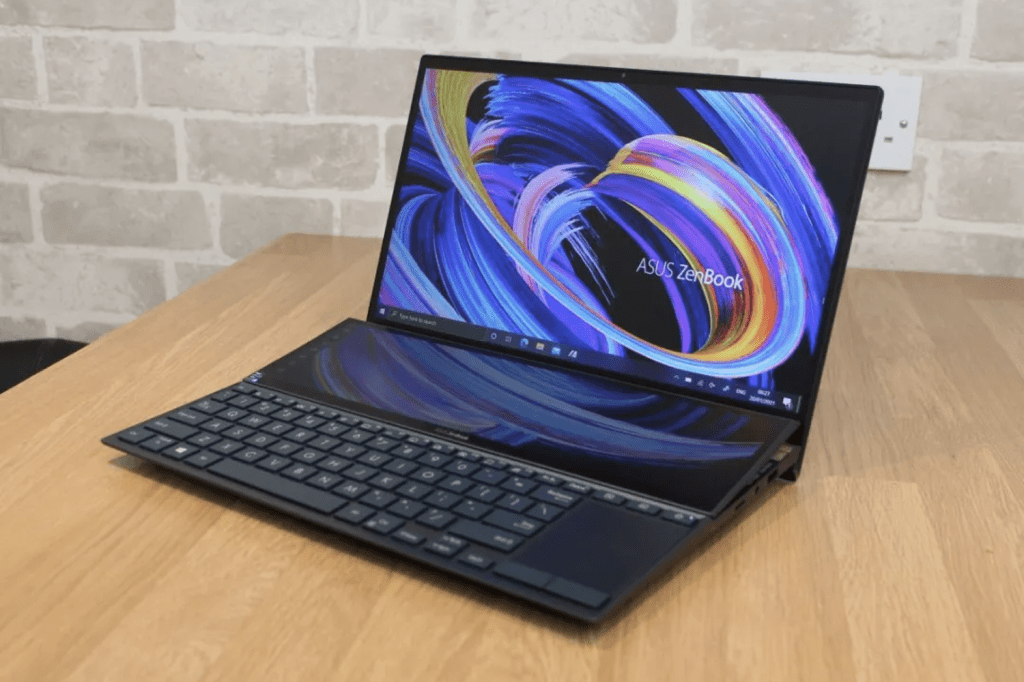
Asus ZenBook Duo 14
There’s a fine line between useful innovation and clumsy compromise. Whether the dual-screen Asus ZenBook Duo 14 is successful in treading that tightrope depends entirely on how you’ll use it.
On the one hand, it’s a ground-breaking laptop with a sharp second screen that unlocks countless options for creativity. On the other, it’s a laptop with tricky ergonomics and awkward dimensions: the ScreenPad pushes the keyboard and trackpad to an odd spot at the front of the laptop.
With 11th gen Intel internals, comprehensive connectivity options, and battery life that can extend to a solid 16 hours with the ScreenPad disabled, the Duo is a reliable performer. That said, you can get more power for the same price from machines that don’t shoehorn a second display above the keyboard.
So is the ScreenPad worth the compromise? Yes, if you’ll include it in your creative process: you can use the bundled stylus for precision sketching, configure the Control Panel app to display dials optimised for Adobe Creative Suite, or usefully snap apps between the two panels.
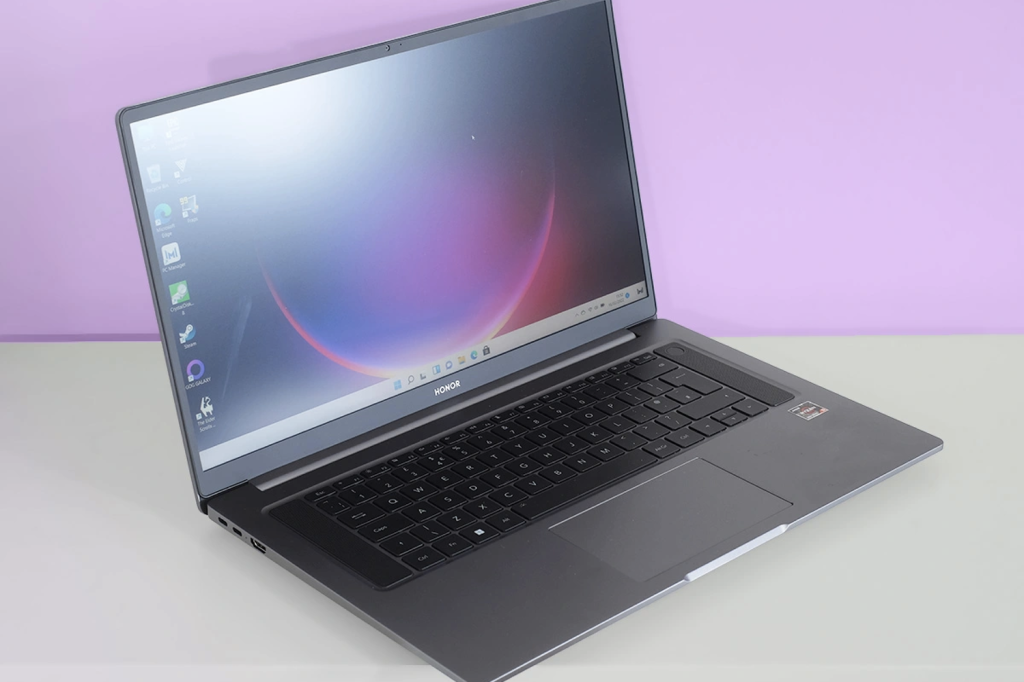
Honor MagicBook 16
Want a capable, classy laptop that doesn’t cost thousands? If you’re content with a couple of cost-saving compromises, Honor’s MagicBook 16 nails the value proposition.
Clad in classy aluminium, there’s more than a hint of MacBook about the MagicBook. But it’s no cut-price copycat: slim borders around the vibrant 16.1in display giving it a streamlined appeal, complemented by surprisingly high 144Hz refresh rates. It’s not completely premium – the plastic touchpad cheapens the feel and the speakers are sub-par – but it’s still an attractive package. Plus it’s 250g lighter than the MacBook Pro 16in, so your satchel shouldn’t suffer.
With AMD Ryzen 5 5600H silicon inside, paired with 16GB of RAM and a 512GB SSD, the MagicBook 16 has plenty of power on tap. There’s no dedicated graphics card, so gaming grunt is a little limited – but for tasks that rely on a nippy CPU, this is a workhorse with style.
[ad_2]
Source link